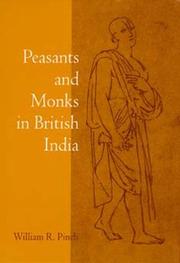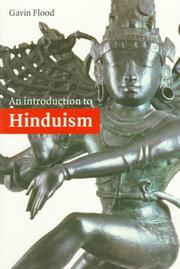| Listing 1 - 10 of 17 | << page >> |
Sort by
|
Book
ISBN: 1474280811 147428082X 9781474280822 9780485174090 9781474280815 Year: 2018 Publisher: London : Bloomsbury Publishing,
Abstract | Keywords | Export | Availability | Bookmark
 Loading...
Loading...Choose an application
- Reference Manager
- EndNote
- RefWorks (Direct export to RefWorks)
"This book contains a detailed discussion of some of the historical, doctrinal, ritual and literary aspects of both Vaishnavism and Shaivism, as first presented - then as Visnuism and Sivaism - at the 1969 Jordan Lecture in Comparative Religion. By comparing both religions, the main characteristics of each tradition is delineated and questions regarding their origins, theological doctrines and practices are reconsidered. Special emphasis is laid on their various interrelations, for example, the partly parallel and often divergent development of their rituals and philosophies."--Bloomsbury Publishing.
Vaishnavism. --- Śaivism. --- Shaivism --- Sivaism --- Sivism --- Hindu sects --- Vaisnavism --- Vishnuism
Book
ISBN: 0961976365 Year: 1992 Publisher: New York Folk Books
Abstract | Keywords | Export | Availability | Bookmark
 Loading...
Loading...Choose an application
- Reference Manager
- EndNote
- RefWorks (Direct export to RefWorks)
Vaisnavism, the Gaudiya tradition --- ancient religious heritage --- modern scholarship --- Gaudiya Vaisnavism --- theology and practice --- the nature of the Absolute --- devotional poetry --- sacred space --- mystical states --- sonic theology
Book
ISBN: 9791036544422 Year: 2019 Publisher: Pondichéry : Institut Français de Pondichéry,
Abstract | Keywords | Export | Availability | Bookmark
 Loading...
Loading...Choose an application
- Reference Manager
- EndNote
- RefWorks (Direct export to RefWorks)
La tension entre le non-dualisme et le dualisme domine toute l’histoire du Vedanta. En face de l’advaita de Śaṅkara, le système de Madhva, auquel cette étude est consacrée, représente l’extrême dualisme, dvaita. Cependant Madhva, après avoir posé la réalité irréductible de la différence entre Dieu et le monde, a comme compensé cette scission de l’être par l’affirmation que tout être autre que l’Être absolu est dépendant de celui-ci, seul Dieu ne dépendant que de lui-même. L’originalité du système de Madhva est d’inventer une relation nouvelle entre l’Être et les êtres. Seul l’Être est capable de faire exister des êtres différents de lui et totalement dépendants de lui ; Dieu permet à toute réalité d’être, et d’être ce qu’elle est. The entire history of Vedanta is characterized by the struggle between the dualist and non-dualist movements. Confronted by the advaita philosophy of Śaṅkara, the system of Madhva, to which the present French study is devoted, represents extreme dualism or dvaita. However, after emphasizing the irreversible difference between God and the world, Madhva, as if to compensate for this apparent rupture, proclaims that all beings other than the One Being are dependent on the latter; only God depends on none other than himself. The originality of the system of Madhva lies in giving a new turn to the relationship between the Being and beings. Only the Being is capable of creating beings different from himself and totally dependent upon him. God allows all reality to be, and to be what it is.
Philosophy --- Hinduism --- Vaisnavism --- philosophy --- Vedanta --- Madhva --- Dvaita --- hindouisme --- philosophie --- Vedānta --- Vishnouïsme
Book
ISBN: 9517651325 9517651333 Year: 2003 Publisher: Åbo : Åbo Akademis,
Abstract | Keywords | Export | Availability | Bookmark
 Loading...
Loading...Choose an application
- Reference Manager
- EndNote
- RefWorks (Direct export to RefWorks)
Vaishnavism --- Vishnouisme --- Chaitanya (Sect) --- Gurus --- Hindu philosophy --- Spiritual life --- Vaisnavism --- Vishnuism --- Hindu sects --- Spiritual life (Hinduism) --- Philosophy, Hindu --- Philosophy --- Philosophy, Indic --- Hinduism --- Chaitnaya (Sect) --- History --- Hindu authors
Book
ISBN: 0896840190 Year: 1979 Publisher: Delhi : Motilal Banarsidass,
Abstract | Keywords | Export | Availability | Bookmark
 Loading...
Loading...Choose an application
- Reference Manager
- EndNote
- RefWorks (Direct export to RefWorks)
Krishna (Hindu deity). --- Play --- Vaishnavism. --- Religious aspects. --- -Vaishnavism --- Vaisnavism --- Vishnuism --- Hindu sects --- Recreations --- Recreation --- Amusements --- Games --- Religious aspects --- Krishna (Hindu deity) --- Vaishnavism --- Play (in religion, folklore, etc.)

ISBN: 0520200608 0520916301 058507044X 0520200616 9780520916302 9780585070445 9780520200609 9780520200616 Year: 1996 Publisher: Berkeley : University of California Press,
Abstract | Keywords | Export | Availability | Bookmark
 Loading...
Loading...Choose an application
- Reference Manager
- EndNote
- RefWorks (Direct export to RefWorks)
In this compelling social history, William R. Pinch tackles one of the most important but most neglected fields of the colonial history of India: the relation between monasticism and caste. The highly original inquiry yields rich insights into the central structure and dynamics of Hindu society-insights that are not only of scholarly but also of great political significance.Perhaps no two images are more associated with rural India than the peasant who labors in an oppressive, inflexible social structure and the ascetic monk who denounces worldly concerns. Pinch argues that, contrary to these stereotypes, North India's monks and peasants have not been passive observers of history; they have often been engaged with questions of identity, status, and hierarchy-particularly during the British period. Pinch's work is especially concerned with the ways each group manipulated the rhetoric of religious devotion and caste to further its own agenda for social reform. Although their aims may have been quite different-Ramanandi monastics worked for social equity, while peasants agitated for higher social status-the strategies employed by these two communities shaped the popular political culture of Gangetic north India during and after the struggle for independence from the British.
Råamåanandåis --- Vaishnavism --- Hinduism --- Religion --- Philosophy & Religion --- Social aspects --- Vaisnavism --- Vishnuism --- Hindu sects --- Rāmānandīs --- Rāmānandins --- Rāmavats --- Social aspects.
Book
ISBN: 048517409X Year: 1970 Publisher: London : University of London, The Athlone Press,
Abstract | Keywords | Export | Availability | Bookmark
 Loading...
Loading...Choose an application
- Reference Manager
- EndNote
- RefWorks (Direct export to RefWorks)
294.5*92 --- 294.5*91 --- Saivism --- Vaishnavism --- Vaisnavism --- Vishnuism --- Hindu sects --- Shaivism --- Sivaism --- Sivism --- Vaisnavisme: Chaitanya; Bhagavata-purana --- Shivaisme: saiva Siddhanta; Lingayats; Tulsi Das --- 294.5*91 Shivaisme: saiva Siddhanta; Lingayats; Tulsi Das --- 294.5*92 Vaisnavisme: Chaitanya; Bhagavata-purana --- Śaivism
Book
ISBN: 082325741X 0823257398 0823257428 0823261530 0823257401 9780823257386 082325738X 9780823257393 1322965013 Year: 2014 Publisher: New York: Fordham university press,
Abstract | Keywords | Export | Availability | Bookmark
 Loading...
Loading...Choose an application
- Reference Manager
- EndNote
- RefWorks (Direct export to RefWorks)
The intensity and meaningfulness of aesthetic experience have often been described in theological terms. By designating basic human emotions as rasa, a word that connotes taste, flavor, or essence, Indian aesthetic theory conceptualizes emotional states as something to be savored. At their core, emotions can be tastes of the divine. In this book, the methods of the emerging discipline of comparative theology enable the author’s appreciation of Hindu texts and practices to illuminate her Christian reflections on aesthetics and emotion.Three emotions vie for prominence in the religious sphere: peace, love, and fury. Whereas Indian theorists following Abhinavagupta claim that the aesthetic emotion of peace best approximates the goal of religious experience, devotees of Krishna and medieval Christian readings of the Song of Songs argue that love communicates most powerfully with divinity. In response to the transcendence emphasized in both approaches, the book turns to fury at injustice to attend to emotion’s foundations in the material realm. The implications of this constructive theology of emotion for Christian liturgy, pastoral care, and social engagement are manifold.
Christianity and other religions --- Hinduism --- Emotions --- Rasas. --- Aesthetics, Indic --- Literature --- Mood (Psychology) --- Poetics --- Rhetoric and psychology --- Hinduism. --- Relations --- Christianity. --- Religious aspects. --- Aesthetics --- Abhinavagupta. --- Aesthetics. --- Bernard of Clairvaux. --- Comparative Theology. --- Emotions. --- Gaudiya Vaisnavism. --- Indian Christianity. --- Jyoti Sahi. --- Liberation theology. --- Rasa. --- Christianity and other religions - Hinduism. --- Hinduism - Relations - Christianity. --- Emotions - Religious aspects.

ISBN: 0521438780 0521433045 9780521438780 Year: 1996 Publisher: Cambridge : Cambridge university press,
Abstract | Keywords | Export | Availability | Bookmark
 Loading...
Loading...Choose an application
- Reference Manager
- EndNote
- RefWorks (Direct export to RefWorks)
This book provides a much-needed thematic and historical introduction to Hinduism, the religion of the majority of people in India. Dr. Flood traces the development of Hindu traditions from ancient origins and the major deities to the modern world. Hinduism as both a global religion and a form of nationalism are discussed. Emphasis is given to the tantric traditions, which have been so influential; to Hindu ritual, more fundamental than belief or doctrine; and to Dravidian influences. It introduces some debates within contemporary scholarship.
294.5 --- 294.5 Hindoeïsme--(in strikte zin) --- 294.5 Hindoeïsme:--verder in te delen zoals 291.1/.8 --- Hindoeïsme--(in strikte zin) --- Hindoeïsme:--verder in te delen zoals 291.1/.8 --- Dharma --- Hinduism. --- Hinduism --- Religions --- Brahmanism --- Tantrism --- Religious life --- Hindouisme --- Tantrisme --- Vie religieuse --- History --- Rituals --- Histoire --- Rituel --- yoga --- narrative traditions --- Vaisnavism --- Visnu --- Saiva --- tantric religion --- the Goddess --- Saktra traditions --- Hindu rituals --- Hindu theology --- Hindu philosophy
Book
ISBN: 9781844656905 9781844656899 1844656896 Year: 2013 Publisher: Durham : Acumen Publishing Ltd,
Abstract | Keywords | Export | Availability | Bookmark
 Loading...
Loading...Choose an application
- Reference Manager
- EndNote
- RefWorks (Direct export to RefWorks)
Hinduism. --- Hindouisme --- Hinduism --- diaspora --- diasporic Hinduism --- indigenous Hinduism --- North America --- Nepali Hinduism --- Southern California --- Trinidad Hinduism --- Hinduism in the Caribbean --- Tamil Saivism in Norway --- contemporary Hinduism in North India --- the Indajatra festival --- vernacular Hinduism in Rajasthan --- Sindhi Hinduism --- devotional expressions in the Swaminarayan community --- Krsna devotion in Western India --- Varkaris --- low-caste Hinduism in Central India --- Vaisnavism in Bengal --- contemporary Hinduism in South India --- snake goddess traditions in Tamilnadu --- Nambutiris --- Ayyapan --- Kerala --- the Sri Venkateswara Temple --- Tirupati --- militant ascetic traditions --- India --- Sri Lanka
| Listing 1 - 10 of 17 | << page >> |
Sort by
|

 Search
Search Feedback
Feedback About UniCat
About UniCat  Help
Help News
News